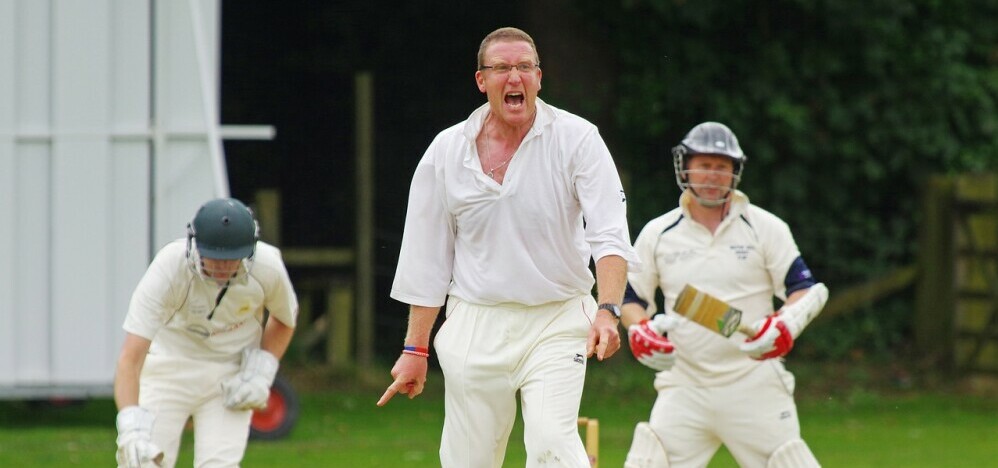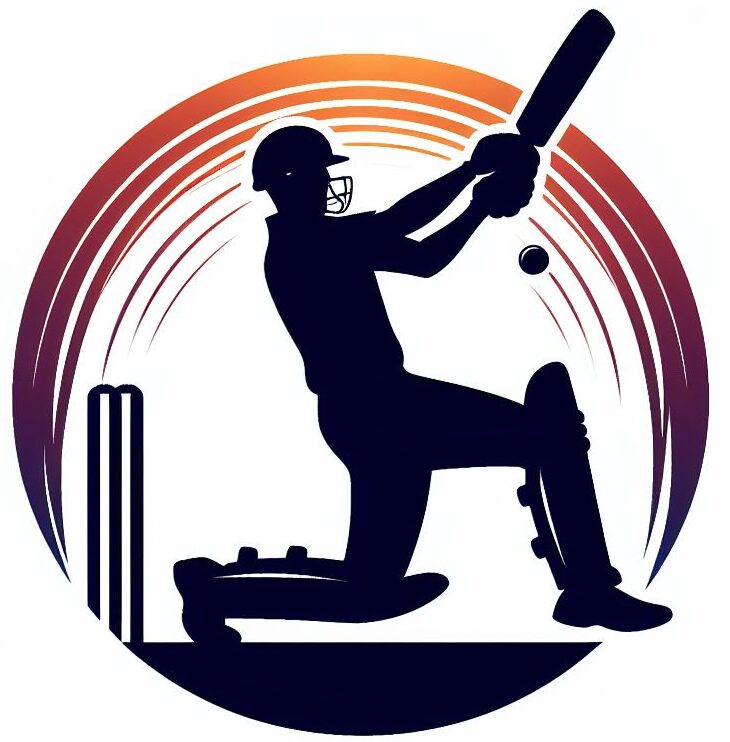The Ultimate Cricket Glossary
People who understand cricket and breathe and live cricket, speak in a language using words that might seem alien and non-sensical to those who’ve never seen a googly get smashed through the gully to the boundary by the nightwatchman to bring up their century.
At TheBoundaryEdge we want to help demystify the mystique that is cricket, and so we’ve created the Ultimate Cricket Glossary to help you … or at least as ultimate a cricket glossary as a 1700 word blog post can allow.
Bouncer
This is a delivery, usually bowled by a fast bowler, that bounces near the middle of pitch, with the intent of passing near the head of the batsman.
Boundary
The outer edge of the cricket field, usually donated by a white boundary rope, or the fence; when the ball crosses this boundary, the batting team scores four runs. If the ball clears the boundary without first bouncing, this is six runs.
Declaration
The captain’s strategic decision to conclude their team’s batting innings, before losing all ten of their wickets. This occurs primarily in test cricket, and is a strategic decision by the captain to allow their bowlers enough time to bowl out their opposition. This is because, even though test cricket is 5 days long, sometimes that still isn’t long enough.
Draw
One of the reasons a captain will declare their innings is to avoid a draw. A draw occurs in test cricket when, after 5 days, neither team has won. Often this is because a lot of time was lost from the game due to rain, or the pitch was so friendly to batsmen that the bowlers couldn’t get enough wickets.
Duck
This can mean two things. A batsman can duck under a bouncer, but it is also when a batsman is dismissed without scoring any runs in an innings. This is symbolized by a zero, resembling the shape of a duck’s egg.
Fine Leg
We are not complimenting the batters legs, here. Instead, this is a fielding position. If, as a batter (at 12 o’clock), you are facing straight on towards the bowler (at 6 o’clock), and your predominant hand is your right hand, Fine Leg is located on the boundary between 1 or 2 o’clock. They are often placed their to stop runs that are nudged off the batter’s legs.
Follow-On
A strategic move where the team batting first can enforce the opposing team to bat again immediately if they haven’t reached a specified score. This only occurs in cricket matches with multiple innings, and for test matches, this specified score is 200 runs less than the team batting first’s score.
Free Hit
In One Day matches and T20 matches, if a bowler bowls a no-ball (see later), the next ball they bowl is considered a free hit. The batsman receiving the free hit ball cannot be out, except if they are run out.
Googly
A normal leg spin ball bowled by a right-arm leg spinner spins from right to left; a Googly is a ball bowled by a leg-spin bowler, with only a minute variation when compare to a normal leg spin ball, that spins from left to right. When bowled well, this is hoped to confuse the batter who plays for the ball spinning one way, only for it to spin the other. Why is called ‘Googly’? It might have come from the word ‘goggle’, which means ‘to stare with wide or bulging eyes’, which, we suppose, was what batters were doing when being beaten by this ball.
Gully
It is not a ditch, it is a fielding position. If, as a batter (at 12 o’clock), you are facing straight on towards the bowler (at 6 o’clock), and your predominant hand is your right hand, Gully is located about 25 metres away at about 10 o’clock. They are usually there to take catches off a slashing stroke.
Hat-Trick
When a bowler takes three wickets in three sequential balls, it is a hat-trick. Run Outs, however, can not be included, as that wicket is not attributable to a bowler. The three sequential balls can be in the same Over (period of 6 balls), can be spread over two overs (e.g. 5th and 6th ball of one over, and the same bowler’s first ball of his next over), or even two innings. However, the three balls must be in the same match.

Howzat
A spirited appeal made by the fielding team to the umpire, seeking confirmation of the batsman’s dismissal. The term ‘Howzat’ comes from a shortening of the phrase ‘How is that?’, as in ‘How is that, my fine man, I do believe that is a wicket. Could you kindly give that out for me, my good sir?’, because, in cricket, ain’t nobody got time for that.
LBW (Leg Before Wicket)
A mode of dismissal where the ball, legally bowled, strikes the batsman’s body, without first hitting the bat, and the umpire deems it would have hit the stumps. This is a complicated dismissal that will require it’s own post to explain, but despite the ‘L’ in the name of the dismissal meaning ‘Leg’, the ball can hit any part of the batter’s body (save the glove), and, theoretically be given out. Sachin Tendulkar was once given out LBW when hit on the shoulder, because he ducked a bouncer that didn’t bounce.
Maiden Over
An over in which the bowler successfully prevents the batsman from scoring any runs.
Nightwatchman
In a test match, towards the end of a day’s play, if a wicket falls, sometimes the batting captain will send in a lower-order batter instead of the next batter in the batting order. This is done to protect the next batter, a batter of more skill than the lower order batter, from the risk of getting out in the last few balls of a day’s play. It doesn’t always work, though.
No Ball
A bowler, when delivering the ball, must have at least a part of his front foot behind the crease when it lands. If they don’t, the umpire (or nowadays, the 3rd umpire checking the video) calls a ‘No Ball‘. This adds a run to the batter’s team score (but not to the batter themselves), and the batter can not be given out for anything except run out for that particular ball.
Powerplay
In One Day Cricket, and T20 cricket, fielding restrictions are put in place for certain periods of the game called the Powerplay. For example, in One Day Cricket, for the first 10 overs of the match, only two fielders are allowed outside the 30 metre fielding circle (marked on the field). For T20’s, this is 6 overs.
Run Rate
Cricket is a game run by numbers, and sometimes, maths gets involved. The run rate is the number of runs scored divided by the number of overs bowled. This shows the scoring rate of the batting team. In Test Matches, the run rate is often below 3 runs an over. At 3.5 or 4 runs an hour, you can consider that the batting side are scoring quickly. In One Day matches, teams regularly bat at 6 runs an over, and in T20 games, run rates of 8 and 9 and more become more prevalent.
Seam Bowling
On a cricket ball, the seam is a ring of stitching that circles the ball. This stitching is raised, and this, combined with the vagaries of a turf pitch (which is never, completely flat) sometimes means that the ball, when it hits the pitch, deviates slightly. A seam bowler is a medium or fast bowler, who strives to use this inconsistency by trying to bowl the ball in a way that the seam hits the pitch.
Silly Point
If, as a batter (at 12 o’clock), you are facing straight on towards the bowler (at 6 o’clock), and your predominant hand is your right hand, silly point is located at about 8 o’clock (sometimes 9, with daylight savings – sorry, had to make that joke one time.) Why the ‘silly’ bit? Well, the fielder is only about 3 or 4 metres from the bat. Very silly indeed.

Slips
This is not an article of underwear, it is a fielding position. Behind you, you have the Wicket Keeper (see later). To his side, you will often have a cordon of 1, 2, 3 maybe even 4 or 5 fielders spread out in an arch. They are there to catch edges from the bat.
Square Leg
This is not a malady affecting a person’s legs, but a fielding position. If, as a batter (at 12 o’clock), you are facing straight on towards the bowler (at 6 o’clock), and your predominant hand is your right hand, square leg is located at 3 o’clock, about 25 to 30 metres from the bat.
Swing Bowling
Due to how air moves differently on one side of the ball to the other, a ball can ‘swing’ i.e. it can move away from, or in towards the batter before hitting the pitch. A bowler will try to shine up one side of the ball, thereby adjusting how the wind moves over the ball, hoping the gain a bit more swing. This can be a difficult ball for a batter to face, because they may not know how far the ball is going to swing, or in which direction it will swing … or even if it will swing at all.
Third Umpire
There are two umpires on the field. The Third Umpire is the umpire that makes video referrals of decisions based on TV replays.
Wicket Keeper
This is the fielder who stands directly behind the batter. If the batter misses the ball, it is the wicket keeper who catches it.
Wide
An illegal delivery that is too wide for the batter to reach, resulting in an extra run for the batting team. In One Day and T20 cricket, what is deemed ‘too wide’ is far more strict than in Test Match cricket.
Yorker
A delivery aimed at the batsman’s toes. It is often a very difficult ball for a batter to play, particular if the ball is swinging (see Swing Bowler).
This is but a wee sample of all the weird and wacky terminology that has made cricket the game it is today i.e. a game that confuses and confounds newbies. But like everything, it takes time to understand the language. Sometimes the best way to learn things is to just jump right into it and get immersed in the lingo.
Also, check out our first post relating to Explaining Cricket From A to Z. And if you want to know why the umpires wave their hands about and what that is signalling, check out our Umpiring Signals post.
So, what are some of your favourite weird cricket terminology? I’d love to hear your thoughts in the comments below.

